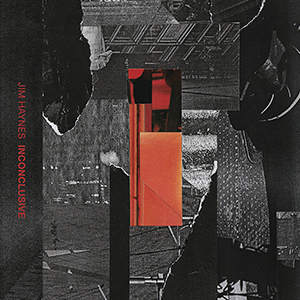 Compared to the last two albums I have heard from the always-fascinating Jim Haynes, this new tape features him pushing his penchant for rusting, decaying sounds into a slightly new direction. Always one for tactile, crackling sounds and unsettling noises, Throttle and Calibration and Flammable Materials From Foreign Lands were colder, sparser affairs that heavily featured field recordings and a distinct sense of isolation. Inconclusive, however, is a more commanding and forceful cassette. Besides featuring Haynes back into chaotic, harsher noise territories, it also shows him working in more rhythmic, vaguely industrial and power electronics sounding contexts as well.
Compared to the last two albums I have heard from the always-fascinating Jim Haynes, this new tape features him pushing his penchant for rusting, decaying sounds into a slightly new direction. Always one for tactile, crackling sounds and unsettling noises, Throttle and Calibration and Flammable Materials From Foreign Lands were colder, sparser affairs that heavily featured field recordings and a distinct sense of isolation. Inconclusive, however, is a more commanding and forceful cassette. Besides featuring Haynes back into chaotic, harsher noise territories, it also shows him working in more rhythmic, vaguely industrial and power electronics sounding contexts as well.
Two new shows just for you. We have squeezed out two extended release episodes for this weekend to get you through this week. They contain mostly new songs but there's also new issues from the vaults. The first show features music from Rider/Horse, Mint Field, Robert Aiki Aubrey Lowe, Anastasia Coope, ISAN, Stone Music, La Securite, Bark Psychosis, Jon Rose, Master Wilburn Burchette, Umberto, Wand, Tim Koh, Sun An, and Memory Drawings. The second episode has music by Laibach, Melt-Banana, Chuck Johnson, X, K. Yoshimatsu, Dorothy Carter, Pavel Milyakov, Violence Gratuite, Mark Templeton, Dummy, Endon, body / negative, Midwife, Alberto Boccardi, Divine. Cow in Maui from Veronika in Vienna. Get involved: subscribe, review, rate, share with your friends, send images! |



 Recently reissued for the second time on Spectrum Spools, Robert Turman's Flux is widely regarded to be one of the most unique and essential releases to emerge from the ‘80s cassette underground. Originally self-released back in 1981, Flux was Turman's solo debut after a brief tenure in NON's earliest incarnation, but the only common ground the two projects share is a general fondness for tape loops and vintage exotica. Nearly four decades later, Flux's tender, bleary, and hiss-soaked minimalism no longer feels particularly radical, but the passing of time has done nothing to diminish the album's simple and gently hallucinatory beauty. Flux casts quite a lovely and hypnotic spell, conjuring an aesthetic that lies somewhere between Andrew Chalk and a dream set in an ancient Buddhist temple.
Recently reissued for the second time on Spectrum Spools, Robert Turman's Flux is widely regarded to be one of the most unique and essential releases to emerge from the ‘80s cassette underground. Originally self-released back in 1981, Flux was Turman's solo debut after a brief tenure in NON's earliest incarnation, but the only common ground the two projects share is a general fondness for tape loops and vintage exotica. Nearly four decades later, Flux's tender, bleary, and hiss-soaked minimalism no longer feels particularly radical, but the passing of time has done nothing to diminish the album's simple and gently hallucinatory beauty. Flux casts quite a lovely and hypnotic spell, conjuring an aesthetic that lies somewhere between Andrew Chalk and a dream set in an ancient Buddhist temple. It has been a hell of a long time since Nurse With Wound last surfaced with a proper new album on United Dairies, but 2019 is looking to be an uncharacteristically prolific year with the epic Trippin' Music looming on the horizon. In the meantime, however, there is the endearingly strange The Vursiflenze Mismantler, which pairs Steven Stapleton and Andrew Liles with Australian vocal artist James Worse. It is very hard to imagine an artist more attuned to NWW's surrealist whimsy than Worse, as he is best known for his poetry crafted almost entirely from made-up and nonsensical words. Louis Carroll's "The Jabberwocky" is the obvious and unavoidable reference point with Worse's "Worsicles," but his poetry only escapes the gleeful mutilations of Stapleton and Liles on one piece here. The rest of the album is a Dada-esque collage of chopped, digitized, and gurgling vocal sounds that occasionally coheres into some unlikely and delightful grooves.
It has been a hell of a long time since Nurse With Wound last surfaced with a proper new album on United Dairies, but 2019 is looking to be an uncharacteristically prolific year with the epic Trippin' Music looming on the horizon. In the meantime, however, there is the endearingly strange The Vursiflenze Mismantler, which pairs Steven Stapleton and Andrew Liles with Australian vocal artist James Worse. It is very hard to imagine an artist more attuned to NWW's surrealist whimsy than Worse, as he is best known for his poetry crafted almost entirely from made-up and nonsensical words. Louis Carroll's "The Jabberwocky" is the obvious and unavoidable reference point with Worse's "Worsicles," but his poetry only escapes the gleeful mutilations of Stapleton and Liles on one piece here. The rest of the album is a Dada-esque collage of chopped, digitized, and gurgling vocal sounds that occasionally coheres into some unlikely and delightful grooves.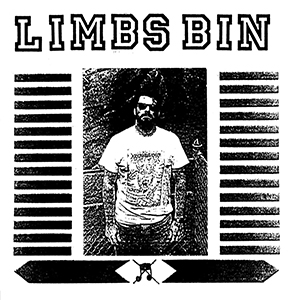 Gleefully jumping between noise, grindcore, power electronics, and just plain bizarreness, Josh Landes’s Limbs Bin is the premier noise artist of Pittsfield, Massachusetts, and with releases such as this 7" it is not hard to see why. The components of Blast Anthemics for a New Generation of Ecstatic Youth are pretty standard: feedback electronics, drum machine blast beats, and a healthy helping of yelling. It is the way Landes mixes these together, however, along with an appropriate amount of silliness, which makes this single stand out.
Gleefully jumping between noise, grindcore, power electronics, and just plain bizarreness, Josh Landes’s Limbs Bin is the premier noise artist of Pittsfield, Massachusetts, and with releases such as this 7" it is not hard to see why. The components of Blast Anthemics for a New Generation of Ecstatic Youth are pretty standard: feedback electronics, drum machine blast beats, and a healthy helping of yelling. It is the way Landes mixes these together, however, along with an appropriate amount of silliness, which makes this single stand out.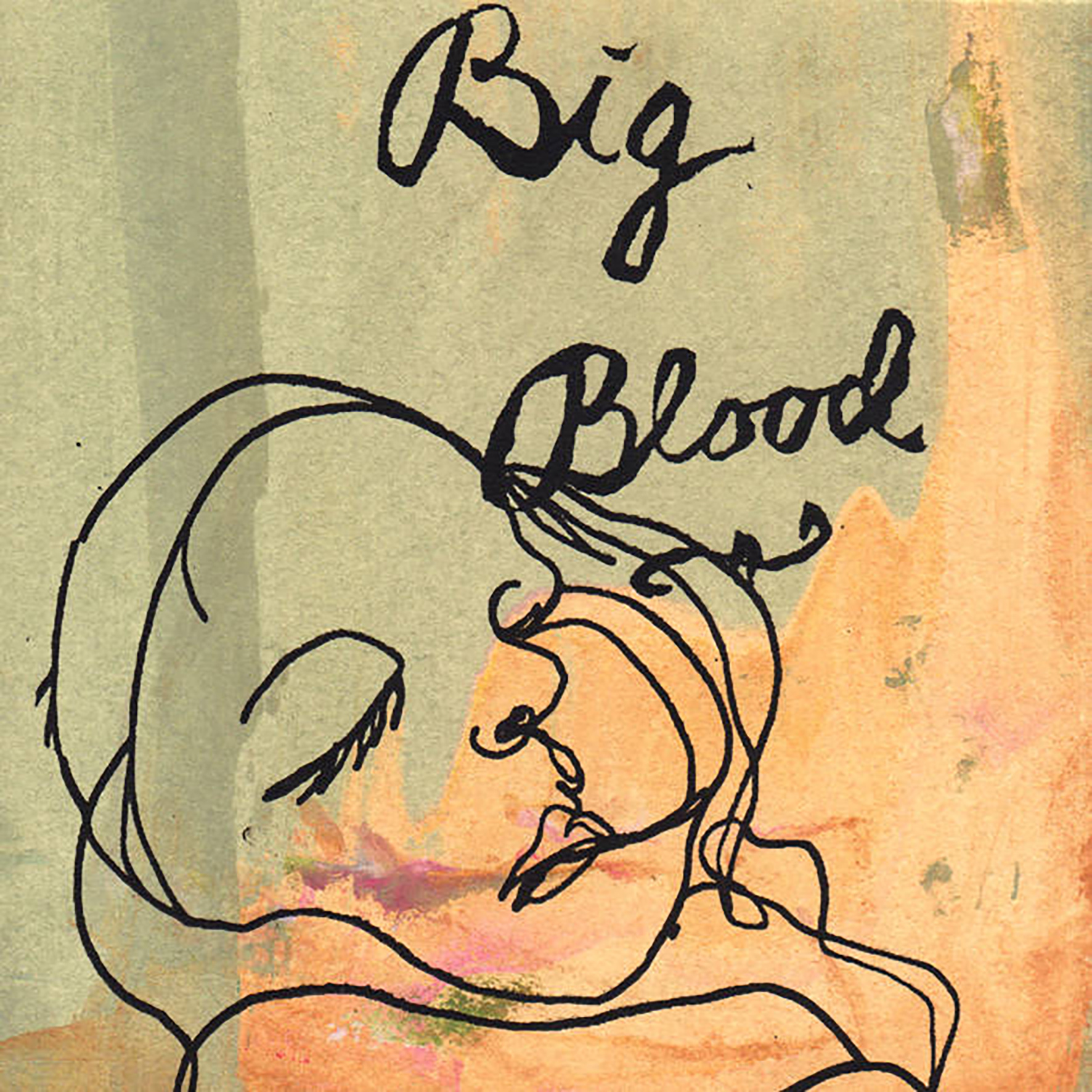 Caleb Mulkerin and Colleen Kinsella’s Big Blood project has consistently been one of the most delightfully unique and life-affirming bands in the American underground over the last decade or so. Admittedly, their major releases have been increasingly prickly, weird, and experimental in recent years, which likely explains why the duo are not nearly as appreciated as they should be: the current era is definitely not the easiest entry point for the curious. Prior to the run of ambitious concept albums that kicked off with 2013's Radio Valkyrie, however, the duo self-released quite a transcendent run of brilliant songs on homemade CD-Rs. It is not an exaggeration to say that the ramshackle back porch psychedelia of those early years yielded some of the most beautiful songwriting that my ears have ever heard. This 2006 release is where that hot streak first began, preceding Fire on Fire's brief but wonderful lifespan on Young God Records by a year. How they managed to be the driving creative force between two great bands at once is beyond me, but Mulkerin and Kinsella managed to churn out at least four stone-cold masterpieces in the span of two years and this was the first of them.
Caleb Mulkerin and Colleen Kinsella’s Big Blood project has consistently been one of the most delightfully unique and life-affirming bands in the American underground over the last decade or so. Admittedly, their major releases have been increasingly prickly, weird, and experimental in recent years, which likely explains why the duo are not nearly as appreciated as they should be: the current era is definitely not the easiest entry point for the curious. Prior to the run of ambitious concept albums that kicked off with 2013's Radio Valkyrie, however, the duo self-released quite a transcendent run of brilliant songs on homemade CD-Rs. It is not an exaggeration to say that the ramshackle back porch psychedelia of those early years yielded some of the most beautiful songwriting that my ears have ever heard. This 2006 release is where that hot streak first began, preceding Fire on Fire's brief but wonderful lifespan on Young God Records by a year. How they managed to be the driving creative force between two great bands at once is beyond me, but Mulkerin and Kinsella managed to churn out at least four stone-cold masterpieces in the span of two years and this was the first of them. Active for over 30 years but with a relatively small discography, Scott Konzelmann's Chop Shop has made a career of releasing only the utmost quality works, although they have largely been in unconventional formats and extremely limited editions. Primer collects two of his earliest works, 1987's Power Pieces Positive Force and 1989's Scraps, albeit in slightly modified forms, and gives them the deluxe treatment, not only resulting in a higher profile for the releases (since vinyl is the most important format these days it would seem), but also giving wider exposure to these important, extremely difficult to find early works.
Active for over 30 years but with a relatively small discography, Scott Konzelmann's Chop Shop has made a career of releasing only the utmost quality works, although they have largely been in unconventional formats and extremely limited editions. Primer collects two of his earliest works, 1987's Power Pieces Positive Force and 1989's Scraps, albeit in slightly modified forms, and gives them the deluxe treatment, not only resulting in a higher profile for the releases (since vinyl is the most important format these days it would seem), but also giving wider exposure to these important, extremely difficult to find early works. Consisting of three distinct artists whose other projects are all rather different, Junkie Flamingos is not quite what I would call a supergroup, but instead a three part collaboration that reflects the artists' distinct styles, but in a singular presentation. Featuring Alice Kundalini's electronics and vocals (of death industrial project She Spread Sorrow) and music from electronic artist Luca Sigurt√° and Daniele Delogu from the folk tinged Barbarian Pipe Band. The sound of Lemegeton Party makes sense, with layered, noisy synths, processed vocals, and dramatic bombast, and it all comes together as a challenging and fragmented record, but with a catchy, pleasant sounding undercurrent.
Consisting of three distinct artists whose other projects are all rather different, Junkie Flamingos is not quite what I would call a supergroup, but instead a three part collaboration that reflects the artists' distinct styles, but in a singular presentation. Featuring Alice Kundalini's electronics and vocals (of death industrial project She Spread Sorrow) and music from electronic artist Luca Sigurtá and Daniele Delogu from the folk tinged Barbarian Pipe Band. The sound of Lemegeton Party makes sense, with layered, noisy synths, processed vocals, and dramatic bombast, and it all comes together as a challenging and fragmented record, but with a catchy, pleasant sounding undercurrent. Recorded live in 2016 under the name Sono Genera, the trio of Jérôme Noetinger (tape, electronics), Robert Piotrowicz (synth), and Anna Zaradny (saxophone, computer) are all prolific artists on their own, but each work in distinctly different styles under that nebulous umbrella of experimental music. Piotrowicz has mostly focused on modular synths during his career; Noetinger’s body of work is multidisciplinary and heavily rooted in tape manipulation, and Zaradny is a composer whose primary instrument is the computer and occasionally horns. With that in mind, it is unsurprising that the core elements of Crackfinder sound as if they are drawn from all over the place from an instrumental standpoint, but these distinct styles end up sitting alongside each other very nicely as a cohesive piece of music.
Recorded live in 2016 under the name Sono Genera, the trio of Jérôme Noetinger (tape, electronics), Robert Piotrowicz (synth), and Anna Zaradny (saxophone, computer) are all prolific artists on their own, but each work in distinctly different styles under that nebulous umbrella of experimental music. Piotrowicz has mostly focused on modular synths during his career; Noetinger’s body of work is multidisciplinary and heavily rooted in tape manipulation, and Zaradny is a composer whose primary instrument is the computer and occasionally horns. With that in mind, it is unsurprising that the core elements of Crackfinder sound as if they are drawn from all over the place from an instrumental standpoint, but these distinct styles end up sitting alongside each other very nicely as a cohesive piece of music.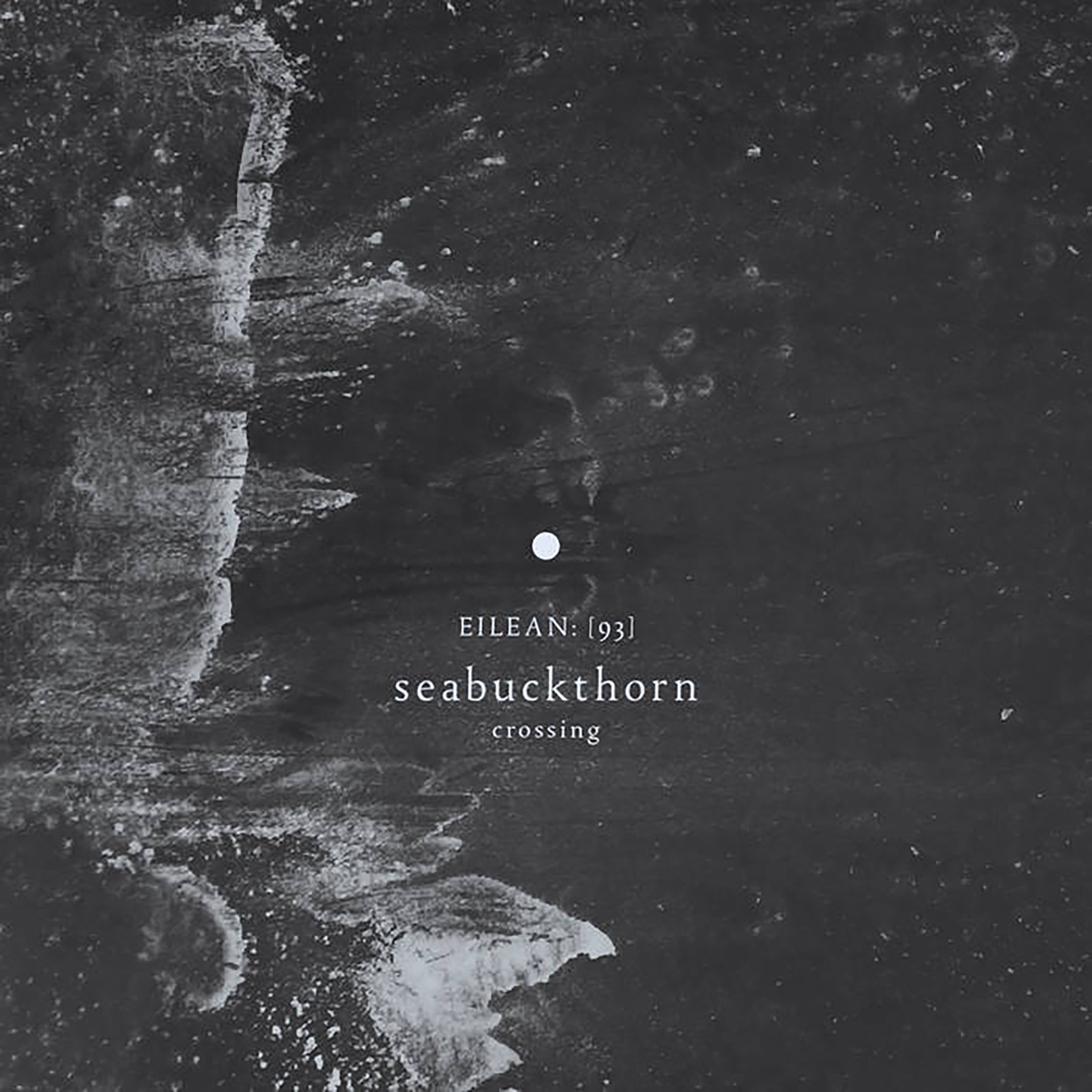 English guitarist Andy Cartwright's A House With Too Much Fire was one of the most striking and underappreciated albums of 2018, beautifully evoking a timeless and haunted-sounding strain of Americana. For his follow-up, the expectant father arguably allows a bit more light to creep into his vision, but plunges still deeper into the more experimental and atmospheric tendencies that made Too Much Fire so wonderful. In fact, Crossing sheds many of the more overt folk trappings of its predecessor, largely replacing the banjos and acoustic guitars with drones from a bowed resonator guitar (though the "Haunted Americana" sensibility remains very firmly in place). Despite its strong emphasis on mood and sustained tones, it would be a mistake to characterize Crossing as anything like a conventional drone album though, as Cartwright's closest kindred spirit at this stage of his career seems to be Richard Skelton. It does not quite resemble the actual Richard Skelton though–instead Crossing often approximates an alternate Skelton who veered towards increasingly warm, intimate, and bittersweet soundscapes rather than embracing the deeper themes and elemental power of the natural world. I certainly have ample room in my heart for both directions, especially when executed this masterfully.
English guitarist Andy Cartwright's A House With Too Much Fire was one of the most striking and underappreciated albums of 2018, beautifully evoking a timeless and haunted-sounding strain of Americana. For his follow-up, the expectant father arguably allows a bit more light to creep into his vision, but plunges still deeper into the more experimental and atmospheric tendencies that made Too Much Fire so wonderful. In fact, Crossing sheds many of the more overt folk trappings of its predecessor, largely replacing the banjos and acoustic guitars with drones from a bowed resonator guitar (though the "Haunted Americana" sensibility remains very firmly in place). Despite its strong emphasis on mood and sustained tones, it would be a mistake to characterize Crossing as anything like a conventional drone album though, as Cartwright's closest kindred spirit at this stage of his career seems to be Richard Skelton. It does not quite resemble the actual Richard Skelton though–instead Crossing often approximates an alternate Skelton who veered towards increasingly warm, intimate, and bittersweet soundscapes rather than embracing the deeper themes and elemental power of the natural world. I certainly have ample room in my heart for both directions, especially when executed this masterfully.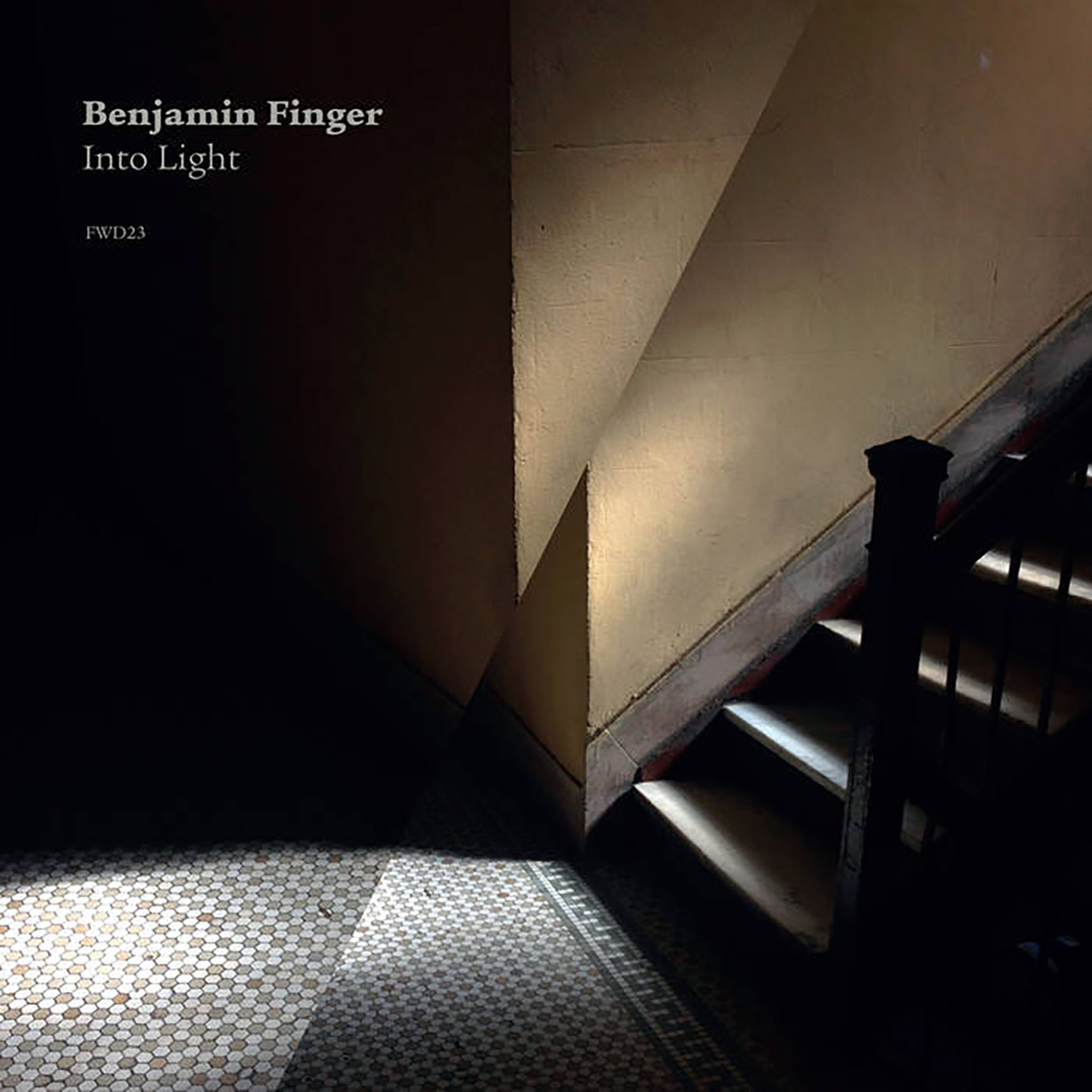 Keeping up with Benjamin Finger’s tireless work ethic in recent years has been an increasing challenge for me, but it has been a worthwhile one, as he manages to maintain a consistently high level of quality and sometimes surprises me with an especially inspired detour or two. Also, his trail of recent releases is not unlike a fun scavenger hunt, leading me from one cool small-press label to another. In the case of Into Light, that small-press label is Berlin’s Forwind and the album is a solid example of Finger's warmly hallucinatory dronescape aesthetic. Pleasure-Voltage, on the other hand, falls into the "inspired detour" category, as Finger debuts an unexpectedly muscular trio with avant-garde violinist Mia Zabelka and extreme music super-producer James Plotkin. The latter album, released on another Berlin label (the eclectic and adventurous Karlrecords), is the more significant by virtue of being unlike anything else in Finger’s discography, but both releases have their share of bright moments.
Keeping up with Benjamin Finger’s tireless work ethic in recent years has been an increasing challenge for me, but it has been a worthwhile one, as he manages to maintain a consistently high level of quality and sometimes surprises me with an especially inspired detour or two. Also, his trail of recent releases is not unlike a fun scavenger hunt, leading me from one cool small-press label to another. In the case of Into Light, that small-press label is Berlin’s Forwind and the album is a solid example of Finger's warmly hallucinatory dronescape aesthetic. Pleasure-Voltage, on the other hand, falls into the "inspired detour" category, as Finger debuts an unexpectedly muscular trio with avant-garde violinist Mia Zabelka and extreme music super-producer James Plotkin. The latter album, released on another Berlin label (the eclectic and adventurous Karlrecords), is the more significant by virtue of being unlike anything else in Finger’s discography, but both releases have their share of bright moments.
